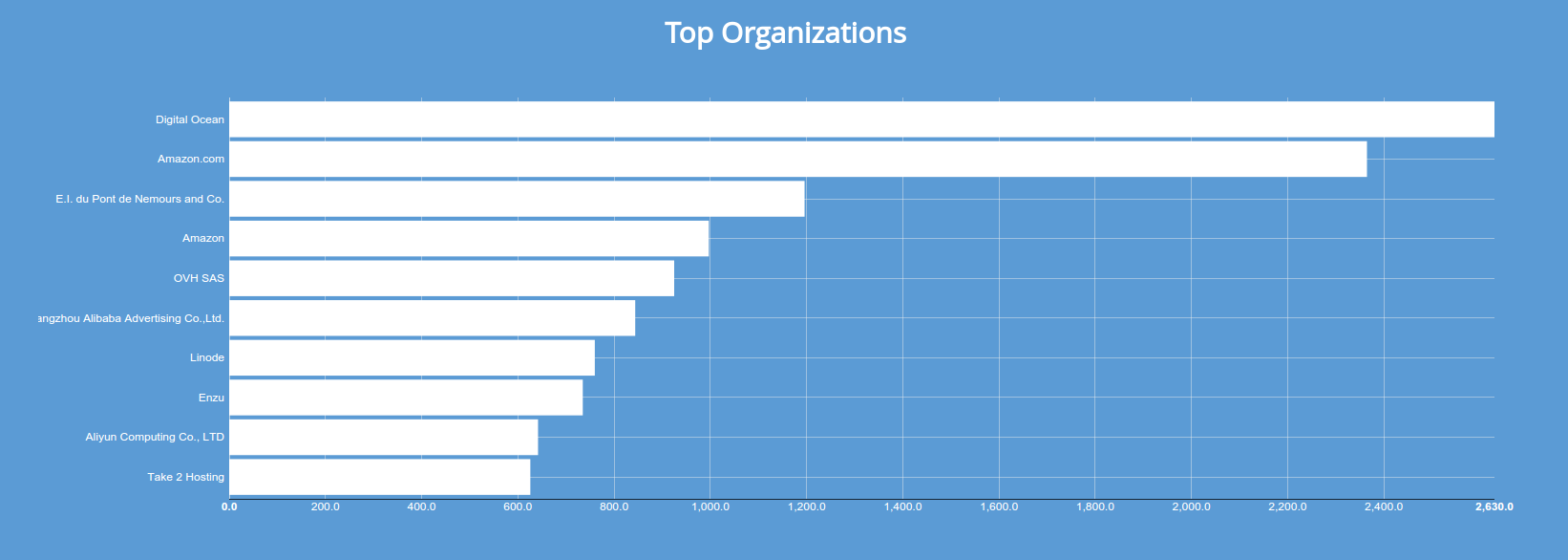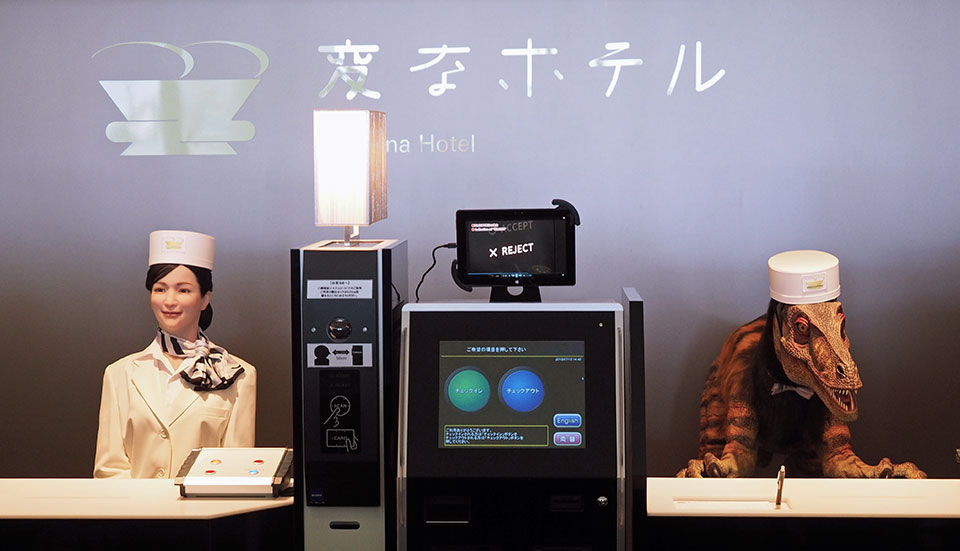Sections
- 100 days of Digital Transformation
- Devices and Manufacturers
- Google and Android
- Apps and Services
- Smart Retail
- Wearables and the Internet of Things
- Cloud and Infrastructure
- Artificial Intelligence and Robots
- Autonomous Vehicles
- Blogging
- Space
- Software, Games and Agile Development
- Hiring and Startups
- Work and Culture
100 days of Digital Transformation
[avatar user=”malm” size=”small” align=”left” link=”file” /]
Simon Wardley’s Corporate Get Fit Plan is a superb and essential read for anyone interested in the business of digital transformation. In it he provides a roadmap and toolkit for conducting a strategic assessment of a company, what he calls “a hundred day corporate get fit plan for a newly appointed executive“. It starts with a frank appraisal of where you’re starting from followed by the contextual awareness development leading to a value chain mapping exercise and subsequent analysis to develop a considered view of what your build vs. buy strategy should be across your business. Wardley is particularly insistent on the importance of understanding the context for your business – what works for Uber isn’t appropriate for a funeral parlour:
Understanding context is key to applying these ideas but such situational awareness is a rarity in corporates. The lack of it causes visible symptoms such as poor communication, misapplication of doctrine (e.g. agile everywhere or six sigma everywhere), massive cost overruns in contracts, silos, duplication, constant reinventing of the wheel and a long list of other undesirable effects.
It’s very likely that a value chain mapping exercise in any reasonably large enterprise will expose significant waste:
The more maps you collect, the more obvious the duplication and bias will become. This can account for huge sums of money. I’ve seen past projects go from £60M to £800K and £1.6M to £96K just by removing duplication and bias. Don’t be shocked to discover levels of waste that exceed 90%+. It’s not you’re making some sort of mistake; it’s just this level of waste exists and very few have gone looking for it in a systematic way. If you clear out the waste, it’ll give you lots of muscle when it comes to strategic gameplay but that’s why this 100 days is all about getting fit.
The doctrine (or methodology) used to address different areas of the value chain maps for the business needs to be dimensioned as part of a bigger picture of the strategic landscape:

Which is likely to result in all the usual corporate antibody activation from those that are affected by the new strategic “gameplay” being developed:
To begin with people don’t tend to like to be challenged. You’ll also get bluster such as “I don’t have time for this”, “We have to sign this contract now” etc. You will experience (as I have done) numerous times when someone will be arguing that you need to sign a contract today for £10 million or the world will end. Be prepared to say “no” and to explain that until they produce a map or talk to another group then the project will not proceed. Be prepared for other execs to play power games but stick to the line “If we can’t explain user needs or what we’re actually spending the money on or you can’t be bothered to not duplicate another group’s work then we’re not spending £10 million”.
It’s the sort of strategy advice that you might reasonably expect from McKinsey and other similar management consultancies albeit for very large sums. As a bonus extra Wardley also provides this amusing representation of the fundamental dynamic at work:

Devices and Manufacturers
- Qualcomm could be laying off as much as 13% of their workforce in a global RIF according to reports this week. Adding to a bad week was news of the EU opening two antitrust investigations into their competitive practices.
- Tomi Ahonen’s indubitable epic on the whole Nokia and Microsoft is worth reading if you have the time just for its sheer scale. In it he predicts Lumia will be shut down within 12-24 months. Be warned, though, there’s a lot of forceful bludgeoning to deal with before you get to that conclusion:
When Lumia offered a series of low-end phones? 3%, 3%, 3%, 3%, 3%, 3%. Colors? 3%. Wireless charging? 3%. NFC? 3%. Windows Phone new better release 7.5? 3%. Windows Phone even newer better release? 3%. Windows Phone even newer NEWER better BETTER release 8? 3%. … The definition of insanity is doing the same thing and expecting a different result. If you do EVERYTHING in the book, quite literally everything in the book, and its still 3%, 3%, 3%, 3%, 3%, this means nothing can be done. This division has never produced a profit. The phones are SEVERELY underpriced for their abilities and STILL WON’T SELL. And that 3% masks one third that are never actually used. So the reality is 2%, 2%, 2%, 2%, 2%.
- Ahonen suggests a Nokia Android portfolio would take it well past that 3% Lumia market share. Even so, perhaps “it’s time for Nokia to draw on its history of consistent evolution and be more ambitious” and look to a post-smartphone future. Either way, in order to prosper, VisionMobile suggest they need to absorb these three lessons from their recent misadventures:
Lesson 1. Business model, not product features define your destiny
Lesson 2. Skate to where the money will be, not where it has been
Lesson 3. Follow developers to find future winners
- The apparent news that Commodore were to release a back to the future Android smartphone called the Commodore PET generated significant media interest. Turns out that the truth is somewhat more prosaic involving a Chinese OEM and some deft gamesmanship with a zombie trademark. Spot the difference below:
One very easy way to “revive” a consumer electronics brand is to just slap it on some generic, white-label product with a custom enclosure and maybe an extra feature or two and call it a day. This is exactly what the Commodore PET phone appears to be. It has a 5.5″ 1080p IPS OGS display with Gorilla Glass 3, 2 or 3GB of RAM, 16 or 32GB of storage, a 13MP rear camera, 8MP front, and a 3000mAh battery. It claims to run on Android 5.0. The octacore MediaTek MT6752 chipset in the Commodore PET is something of a clue, too – it is used extensively in no-name budget-brand and custom-label smartphones created by companies in China.


- The same Octocore MT6752 chipset used in the “Commodore PET” (sic) is employed in this $140 landfill Android device available to buy online today in a special offer 54% reduced.
- In another sign of the vibrancy of the Chinese OEM scene, Huawei just announced they had a great H1:
Huawei said that its sales increased by 30 per cent in the first half of 2015, with the company citing “stable and healthy growth” across its operating units.
- Staying on the back to the future theme, the legendary Marshall purveyors of amplification hardware through the Rock Era surprised many by announcing a 4G Android 5.0 smartphone of their own. The Marshall London could well be the most rock and roll phone ever. You can safely bet this is true:
It’s likely that Marshall isn’t creating this phone itself, instead working with a manufacturer to build the device on its behalf.
- It’s certainly a lovely looking device with some nice mechanical touches judging by this gallery from The Verge:

- Inevitably one needs to ask if the signature gold volume dial has the ability to go “one louder” than other comparable smartphones:
- Next generation smartphones could soon include a spectrometer, centimeter-scale GPS and a gas sensor.

Google and Android
- Google is often seen by users as a search company or by customers as an advertising company but it is equally “a mapping service, email provider, video site and smartphone operating system.” This Telegraph article argues that its future is going to get even more complicated and that the company remains best seen as a long-term investment given the sheer width of its activities and degree of mystery around its proximate motivations:
There is a theory is that much of Google’s more left-field work is an employee-acquisition cost, it being much easier to hire and retain gifted programmers to write lucrative advertising algorithms if they believe they will be able to work on developing artificial intelligence one day.
- Android M is getting native visual voicemail bringing it up to feature parity in that respect with iPhone:
/cdn0.vox-cdn.com/uploads/chorus_asset/file/3878358/15_-_1.0.png)
Apps and Services
- Mathilde Collin, CEO at Front, explains why desktop apps are “making a comeback“ with the aid of this 2×2 matrix:
- Maybe so but in the memorable conclusion reached from this analysis, “desktop is for dad”:
desktop is for dad. pic.twitter.com/dofeOo58r1
— Luke Wroblewski (@lukew) July 16, 2015
- Facebook is edging into news curation:
mobile users will now be able to curate and personalize their news feeds by selecting the friends and pages whose posts will appear up top.
- It seems a sensible and obvious move particularly given this recent analysis from Pew Internet Research suggesting that users are increasingly defaulting to social media mainstays like Twitter and Facebook for first access to news:
The share of Americans for whom Twitter and Facebook serve as a source of news is continuing to rise. This rise comes primarily from more current users encountering news there rather than large increases in the user base overall, according to findings from a new survey.

- Instagram data point. The service now claims 14 million active users in the UK which equates to nearly 22% of the population if one naively assumes one account per person:
Instagram says for the first time it has 14m active users in the UK
— Gideon Spanier (@gideonspanier) July 13, 2015
- Good post on Apple Search and “app indexing” highlights the particular efforts Apple are making to occupy the privacy high ground:
Apple’s new app indexing framework showcases a distinct effort to protect users’ personal information by introducing multiple app indexes
- Booking.com just released an Android app in what is an increasingly crowded market for last minute reservations:
- TNW reporting that Facebook is also building “a virtual assistant powered by real people” called Moneypenny. Sounds a bit like a concierge service which might fit well with its recent interest in chat messaging:
It could rival services like Magic, which lets you request services like grocery deliveries or flight bookings by sending a text message.
- Staying with that theme, Artificial Intelligence and Machine Learning married with premium service could make for another disruptive assault on concierge status quo. The combination of human curation and algorithms could usher in innovative “Concierge as a Service” style offerings that challenge incumbent cost structures presented by essential human-centred lifestyle companies such as Quintessentially. Right now, Magic is arguably the leading example of such a CaaS proposition:
That level of premium customer care was hard and expensive to provide before, but machine learning and better computer/human workflow tools means that startups can actually build the best of the former middlemen, but now offer those services to everyone due to better cost structures. Think Mandarin Oriental concierge service at Super 8 prices.
- The balance between human curation and algorithms is a topic that Benedict Evans has increasingly been thinking about. In this thought-provoking post he explores the use cases for human curation vs. machine algorithms and suggests that the best services are increasingly marrying elements of both:
mapping the internet by hand is impossible – you need algorithms. But mapping the world with algorithms alone is also impossible, for now – you need people to look at the data too.
Smart Retail
- Ben Wood of CCSInsight on why the launch of Apple Pay in the UK “may herald the start of something big“:
I think we’re at a tipping point for mobile payments in the UK. Of course it’s going to take time, but yet again it seems like Apple is exploiting its unstoppable momentum to kick-start the market, leaving rivals such as Google’s Android Pay and Samsung Pay on the back foot once more.
- BuzzFeed on Facebook’s plans to branch out into retail by essentially providing long tail retailers with micro eCommerce sites:
The company is building out shops within Facebook Pages, essentially mini e-commerce sites that give businesses a chance to set up second homes within its walls. The shops are still in the testing phase, but some already feature “buy” buttons that allow the entire shopping experience to occur within Facebook — from product discovery to checkout.

- Google meanwhile has launched a platform agnostic iBeacon competitor. It is called Eddystone and Google are looking to court developers in the first instance:
Alongside the launch, Google will offer the Nearby API and Proximity Beacon API to help developers focus on how to transmit data to devices that are in range of select beacons, while allowing them to monitor beacons to make sure everything is running smoothly.

Wearables and the Internet of Things
- Engadget on “why the Apple Watch is flopping“:
Even with generous rounding errors, the Watch has failed to become the status quo object in wearables. And for Apple, that’s a flop.
- Jewelbots “connected friendship bracelet” proposition sounds like an interesting way to encourage more girls into coding given the popularity of the non-tech variant of these wearables within that demographic.

- The Misfit Flash Link is a $20 activity tracker that also controls apps and connected home devices:

- This Forbes opinion piece on the “$11 trillion” Internet of Things opportunity is notable for introducing a new term “Point of Life (POL) analytics” to encapsulate what’s at the heart of the big data gold rush for mobile device OEMs and app developers alike:
POL, to vastly simplify the definition, is a computerized data collection and analysis method used to establish a subject’s past behavior, determine its current behavior, and predict its future behavior. The number and type of data points that go into this analysis, particularly as it pertains to humans as the subject, have been increasing exponentially over the last decade. The technique can but does not necessarily involve artificial intelligence (AI) and machine learning.
Cloud and Infrastructure
- The Amazon cloud ecosystem is “where the cloud action is” in case you didn’t already know that.
- InfoQ presentation on the programmable world of APIs and containers and how they can be used to support microservice development with the aid of API frameworks like Swagger.
- @charltones has published the first in a series of practical posts explaining how he Dockerized his backend setup. Part 1 looks at Docker Machine.
- This fascinating analysis of MongoDB instances in the wild reveals that a lot of them rather alarmingly have no authorization enabled:
A quick search for MongoDB reveals that there are nearly 30,000 instances on the Internet that don’t have any authorization enabled.
- It turns out that the root cause was that the corresponding fix hadn’t been applied for two years since being reported. And that interestingly many cloud-based images haven’t been updated to fix the issue:

The vast majority of public MongoDB instances are operating in a cloud: Digital Ocean, Amazon, Linode and OVH round out the most popular destinations for hosting MongoDB without authorization enabled.
Artificial Intelligence and Robots
- This fantastic @iamtrask post starts off with a big bang in the form of a neural network implementation in 11 lines of Python. It proceeds to dissect in fascinating detail over many pages what each of the terms here mean and where they come from. The code is essentially a “toy” implementation of the back propagation algorithm with X representing inputs, y the desired output, w0 and w1 representing weights, l1 the “hidden layer”, l2 the output layer and l1_delta and l2_delta representing the error from desired value. The equation for calculating l1 is a standard 0 to 1 sigmoid function. The key sigmoid feature that their differential can be expressed in terms of themselves is used in the equations to calculate the l1 and l2 deltas. The code takes a few seconds to run on a standard Python numpy setup to print out input, calculated output and weights to achieve it:
import numpy as np
import random
X = np.array([ [0,0,1],[0,1,1],[1,0,1],[1,1,1] ])
y = np.array([[0,1,1,0]]).T
w0 = 2*np.random.random((3,4)) - 1
w1 = 2*np.random.random((4,1)) - 1
for j in xrange(1000000):
l1 = 1/(1+np.exp(-(np.dot(X,w0))))
l2 = 1/(1+np.exp(-(np.dot(l1,w1))))
l2_delta = (y - l2)*(l2*(1-l2))
l1_delta = l2_delta.dot(w1.T) * (l1 * (1-l1))
w1 += l1.T.dot(l2_delta)
w0 += X.T.dot(l1_delta)
print(X)
print(l1)
print(l2)
- Japan’s first robot staffed hotel has an animatronic dinosaur receptionist:

- Blake Irving, CEO of GoDaddy, provides an personal perspective on the impact of Artificial Intelligence on the future of work. In it he suggests that Narrow AI is not going to replace individual entrepreneurship which in turn will benefit from its arrival which he is very bullish about: “An economy made up of millions of individuals who are doing what they love is a welcomed change that AI is helping make real. In that sense, I say bring on the AI.” It is worth bearing in mind that:
GoDaddy’s vision is to radically shift the global economy toward small business by empowering people to easily start, confidently grow and successfully run their own ventures.
Autonomous Vehicles
- Chris Urmson is the Director of Google’s self-driving car program. His latest Medium post offers a good vantage point on the current state of play and offers this interesting insight into driver distraction:
Our self-driving cars are being hit surprisingly often by other drivers who are distracted and not paying attention to the road.
- Part of what’s distracting the prang-prone is presumably the obvious and bristling array of sensor tech packed by a modern autonomous vehicle. National Tyres provide an entry level infographic look at some of it from lidar, radar and ultrasonic sensors to camera-enabled vision.
- LinkedIn CEO Reid Hoffman published a post (where else?) on LinkedIn outlining the huge transformative potential offered by mass autonomous vehicle take up. It offers some interesting food for thought but is somewhat Panglossian in outlook:
By fully embracing autonomous vehicles, humanity will free up billions of hours to spend in more flexible and potentially rewarding ways. The fact that driverless vehicles will significantly reduce driving-related deaths and the costs associated with them is an extremely valuable aspect of them. But what makes them truly disruptive is not only their capacity to save lives – it’s their capacity to save minutes and hours, and help billions of people live more productively year after year.
Blogging
- Several of the links this week are to Medium blog posts. Despite the usual “digital sharecropping” concerns there is a reason why it is so popular. According to this blogger, it means goodbye to all this:
I set up my WordPress website and purchased shared hosting on Hostgator. And I spent days and nights customising my WordPress plugins. I even went on to god knows how many blogs and left comments without even reading any of their articles. I made sure, however, to come back and check whether the moderator had approved my comment so that I would get the backlink.
- And focusing on the most important part of blogging which is the content itself. Medium does offer a low barrier of entry to test the water and you can always cross-link back which is advice I might want to heed too:
You can always give Medium a try or you can also publish your essays first on your own website and cross-post them on Medium after few days. … No matter where you blog, just type. And Medium is a great place to test your writing skills on a built-in audience before making plans for a blog nobody may ever read.
Space
- The “best image yet” of Pluto taken by New Horizons spacecraft in its fly-by:

- Several wags found Pluto the dog in profile in it:
It's really Pluto! pic.twitter.com/Ny5stq3YD5
— Helge Bjørkhaug (@astrohelge) July 14, 2015
- The only way up from there is a spot of Eschatology. Specifically a TED Talk on How the Universe will End:
Software, Games and Agile Development
- VisionMobile developer megatrends H1 2015 report is now out and is clear on the power of developers as the new industrial kingmakers:
Developers matter a great deal to businesses. From telecom to fashion, from logistics to lighting, today’s competitive battles are won and lost by attracting developers.
- This video explains the maths behind No Man’s Sky:
- NYT on the remarkable life of Satoru Iwata the much admired CEO of Nintendo who sadly passed away at just 55.

- InfoQ post outlining the chief reasons why software projects fail. Been there, seen all this and so have most of you. The agile and devops movements are in many senses a reaction to these antipatterns:
- Accepting a forced schedule or mandated completion/ milestone dates without substantial data and analysis.
- Adding excessive personnel to achieve unrealistic schedule compression.
- Failing to account and adjust for requirements growth or change and making necessary adjustments to the schedule and budget forecasts.
- Emotional or “intuition-based” stakeholder negotiation that ignores facts and statistics.
- False, but common belief that the proverbial IT silver bullet alone can solve project throughput or process issues.
- Something else that’s been well understood for a while is that the larger the project the likelier it is to fail. This is the dynamic behind the multi billion dollar IT overspends you hear about. This fantastic InfoQ presentation on software craftsmanship covers a lot of excellent territory. In amongst the slides is this one breaking down the correlation between project size and success. No wonder top software outfits insist on small teams and clear defined short horizon objectives. Which in practice chimes with agile approaches:

- TNW tips to “make any team agile” boils down to these four:
- Empower your users
- Nurture flexibility
- Hands-on managers
- Use consultants wisely
Hiring and Startups
- HBR post on why the old myths around moving jobs no longer apply. The dynamic has changed dramatically in as little as four years from employer to employee driven by intense competition for specific skills in particularly high demand:

- Relatedly, supply and demand are the key factors underlying the dynamic behind this Quora question:
At Facebook and Google, why are many new CS graduates offered 120k+ with a 30-120k signing bonus while those with a few years experience are offered a baseline salary with no bonus?
- Inspiring tale of a young Argentinian SAP programmer who followed the demand and gained a “dream job” after spending “a year to do as many MOOCs as I could and learn as much as possible“. Thanks to EdX he was able to change career after obtaining skills in Python, data science and machine learning.
- BusinessInsider offer this insight into the favorite interview questions of top execs including “What would you do in the event of a zombie apocalypse?” and “What gets you out of bed in the morning?” to “What was the last costume you wore?” and “What have you invented?“
- For those who eschew the vicissitudes of the exec interview, Mark Suster’s 2012 post on the unique pressures of being an entrepreneur still retains an essential power. It may be that you have to become an entrepreneur because you literally don’t fit into the linear corporate world. It takes discipline and stamina particularly in relation to work-life balance and it’s not the life for everyone:
“Entrepreneurshit. It never ends. It’s not all glamor. It’s mostly not glamorous at all. It’s just something you have to do. Often because you’re unemployable. Your impertinence would get you fired in 2 days for telling your boss he’s a fuck wit. And it’s why you probably will quit on day 366 after the acquisition.”
- As if to underline Suster’s essential point about the sheer ambiguity of a startup enterprise, a salutary tale from AirBnb CEO Brian Chesky who approached 7 investors in 2008 for a 10% stake in the startup. None of them took up the chance to own 10% of a unicorn for $150k for what were probably entirely sound reasons at the time:
On June 26, 2008, our friend Michael Seibel introduced us to 7 prominent investors in Silicon Valley. We were attempting to raise $150,000 at a $1.5M valuation. That means for $150,000 you could have bought 10% of Airbnb. Below you will see 5 rejections. The other 2 did not reply.
Work and Culture
- NYT published an important article on the increasing use of contract labour, the so-called “Gig Economy”. The article assessed the impact of contractingon US employment practices and the hollowing out and decline of the American middle class. Uber is merely the whipping boy du jour of a movement that has been decades in the making:
Uber is not so much a labor-market innovation as the culmination of a generation-long trend. Even before the founding of the company in 2009, the United States economy was rapidly becoming an Uber economy writ large, with tens of millions of Americans involved in some form of freelancing, contracting, temping or outsourcing.
- WashPo on US job data mapped in incredible detail as part of a comprehensive visualisation undertaken by a Harvard PhD student:

- Awesome Atlantic post about Toki Pona the RISC equivalent of human languages:

- Twelve mind tricks to “make people like you and help you get ahead” include somewhat counterintuitively (to put it mildly) “Chew gum to relax and focus” and “Maintain eye contact for 60% of a conversation“.
